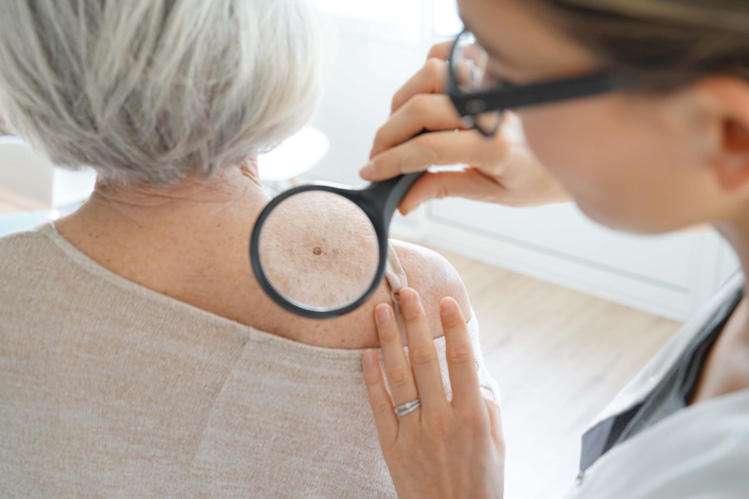Consult a trusted dermatologist to address your dermatology needs.
Consult a trusted dermatologist to address your dermatology needs.
Blog Article
Browsing Skin Cancer Cells Therapy: The Necessary Role of Mohs in Modern Dermatology Practices
Skin cancer cells, a complicated diagnosis, frequently leaves individuals coming to grips with various treatment choices. Among these, Mohs surgery stands as a beacon in contemporary dermatology, renowned for its precise method to cancer cells removal and preservation of bordering healthy tissue. This cutting-edge practice guarantees not just exceptional cosmetic results but likewise provides instant outcomes, alleviating person stress and anxiety. As we explore the ins and outs of this treatment, one will appreciate its essential function in skin cancer treatment.
Comprehending Skin Cancer: Kinds and Threats
Skin cancer cells, a potentially deadly malady, is much much more widespread than many individuals realize. This illness, brought on by the unchecked development of unusual skin cells, largely results from DNA damages due to exposure to the sunlight and ultraviolet (UV) light. There are 3 main kinds of skin cancer: Basal cell cancer, Squamous cell carcinoma, and Cancer malignancy. While the former two are much less deadly and compose the majority of diagnosed situations, melanoma is one of the most hazardous. It makes up just about 1% of skin cancer cells cases but causes the huge majority of skin cancer cells fatalities - chemical peel. Danger aspects include reasonable skin, background of sunburn, excessive sun exposure, living at high elevations or near to the equator, having many moles, a household background of skin cancer, and deteriorated immune system.
What Is Mohs Surgical treatment and How It's Changing Skin Cancer Cells Therapy
In spite of the countless treatments presently available for skin cancer cells, Mohs surgical procedure stands out as a groundbreaking and highly reliable solution. Named after Frederic E. Mohs, the medical professional who established the procedure, Mohs surgical treatment is an accurate medical strategy used to deal with skin cancer cells. Throughout the procedure, thin layers of cancer-containing skin are progressively gotten rid of and examined till only cancer-free tissue remains. This technique allows the surgeon to verify that all cancer cells have been gotten rid of at the time of surgical treatment. This level of accuracy, incorporated with the capacity to spare as much healthy tissue as feasible, is reinventing skin cancer treatment. Consequently, Mohs surgery has actually ended up being a foundation of contemporary dermatology practices.
The Benefits of Mohs Surgical Treatment Over Standard Skin Cancer Cells Treatments
Building on the ingenious nature of Mohs surgery, it's critical to consider its countless benefits over standard skin cancer treatments. Unlike guidelines, Mohs offers a greater remedy rate, typically reaching 99% for first-time therapies and 94% for recurring cancers cells. This precision is due to its unique approach of considerably getting rid of and taking a look at tissue layers until just cancer-free cells stay (mohs surgery). Furthermore, it reduces damage to healthy skin, leading to much less scarring and boosted aesthetic results. Mohs also provides instant results, eliminating the anxiety-ridden wait typical with why not check here various other techniques. Finally, it's cost-efficient, as the surgery and tiny exam occur simultaneously, eliminating the demand for added lab solutions. Hence, Mohs represents a substantial improvement in dermatological techniques.
The Procedure of Mohs Surgical Treatment: What to Anticipate Throughout the Refine

Prospective Negative Effects and Post-Operative Care of Mohs Surgical Treatment
Undergoing Mohs surgery, like any kind of various other medical procedure, involves potential side results that individuals must be conscious of. Common side effects consist of discomfort, bruising, and swelling at the surgery website. In some instances, extra treatments may be necessary to make certain complete elimination of the malignant cells.
Final thought

Report this page